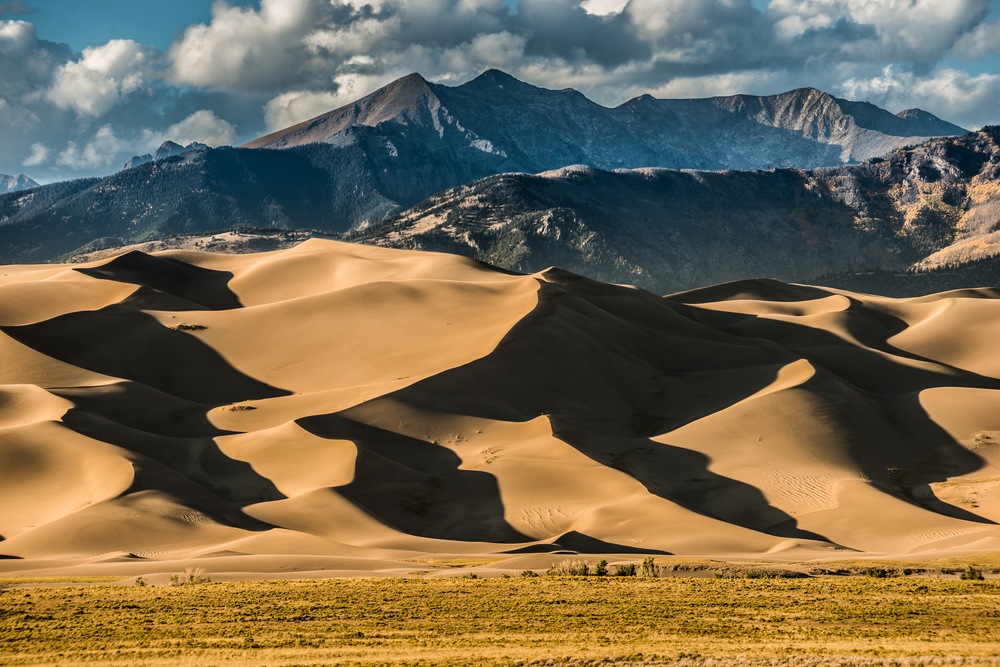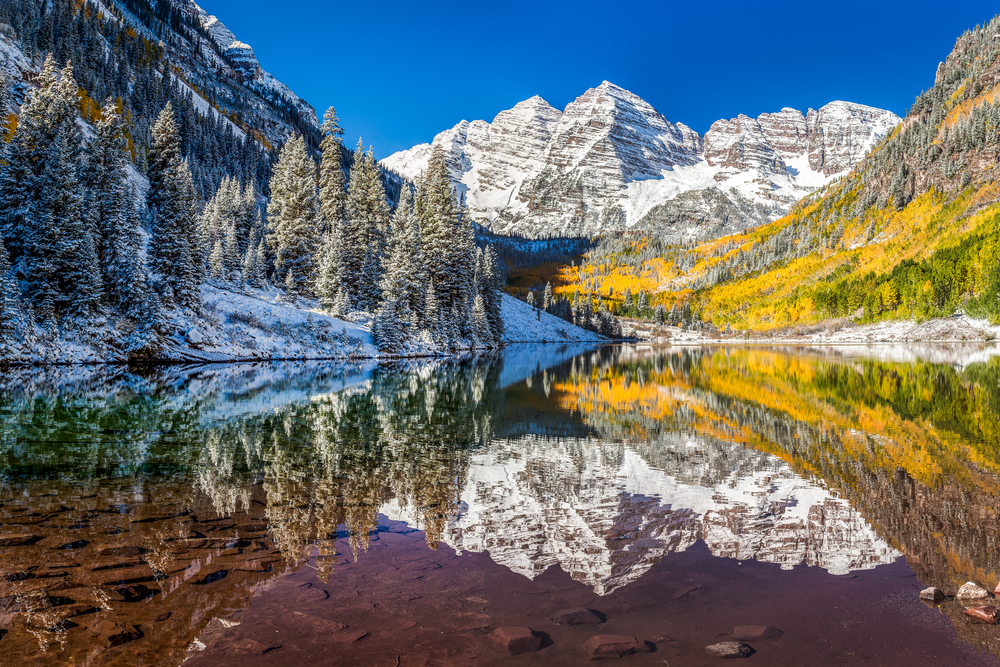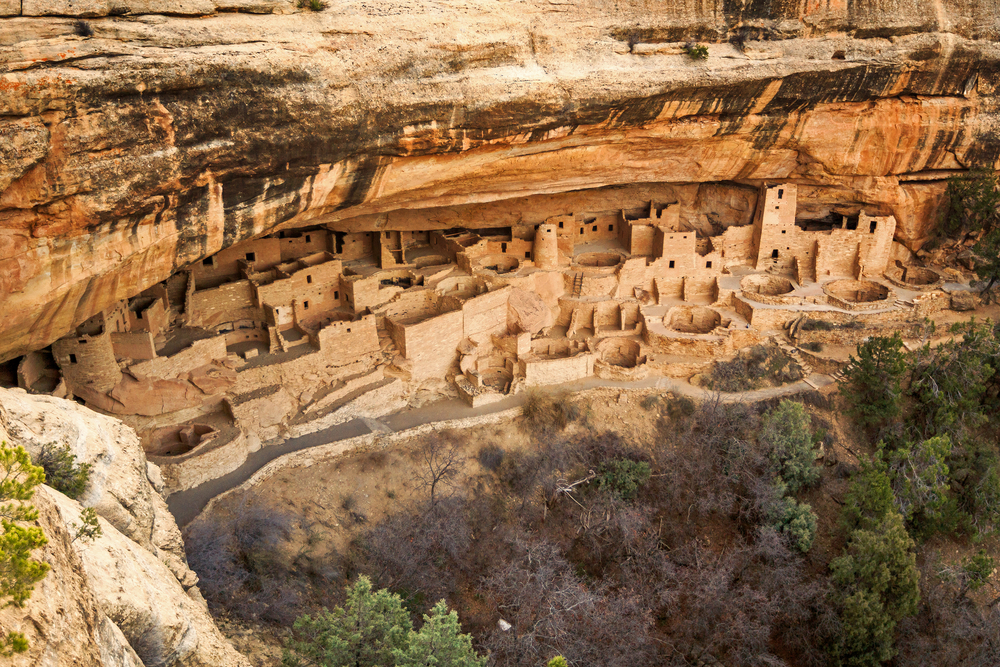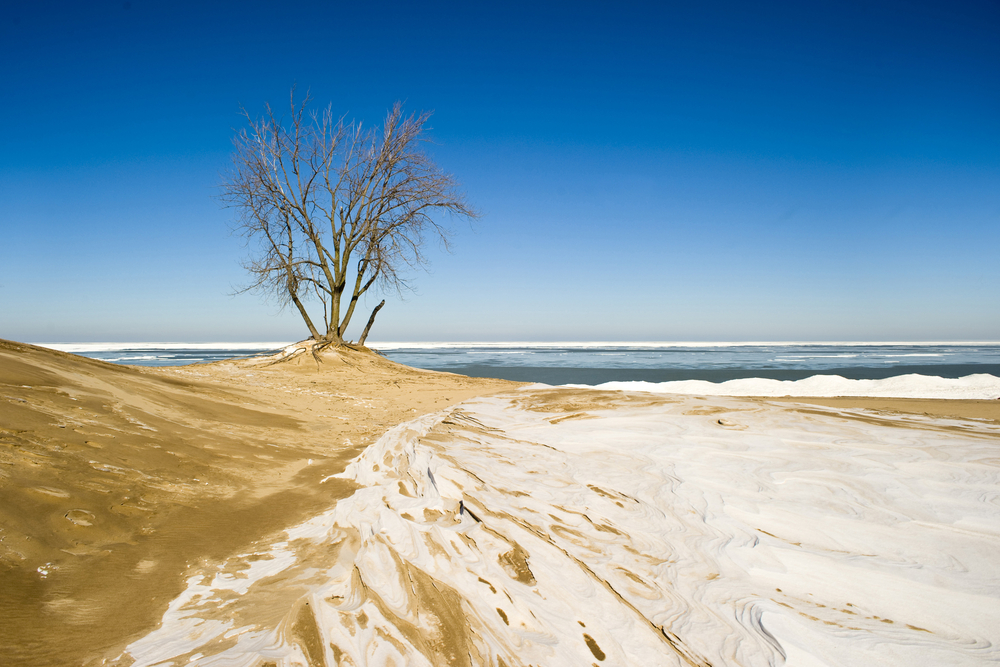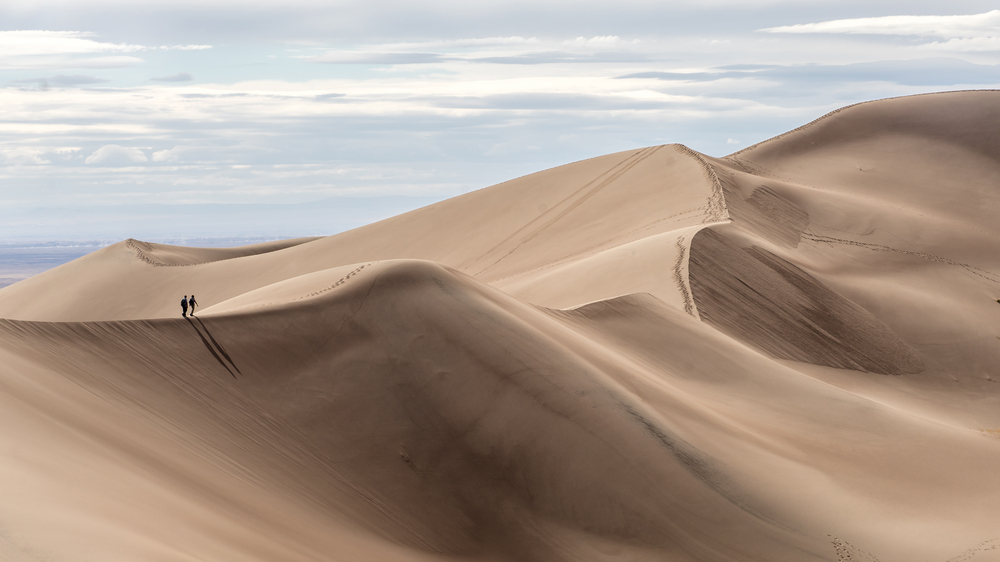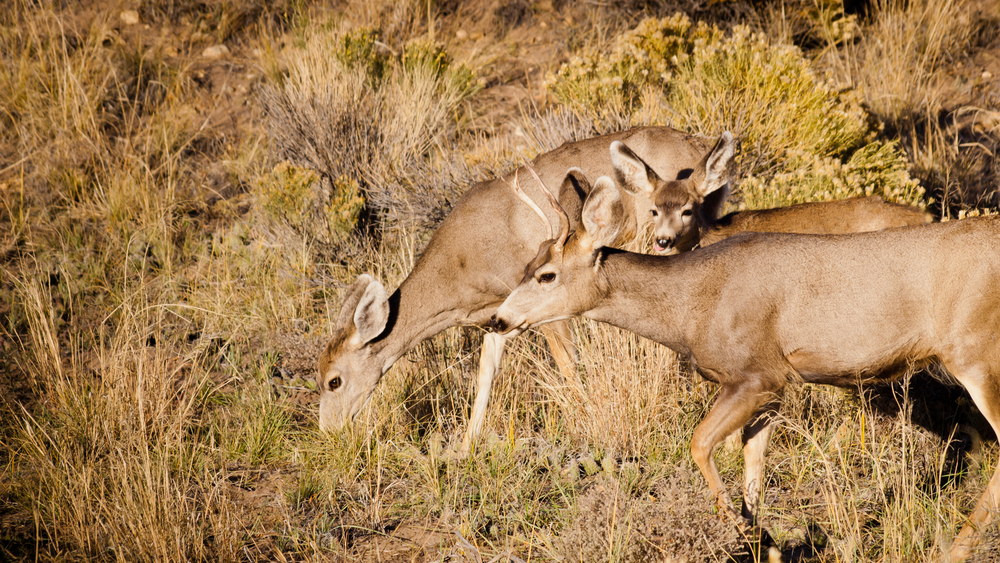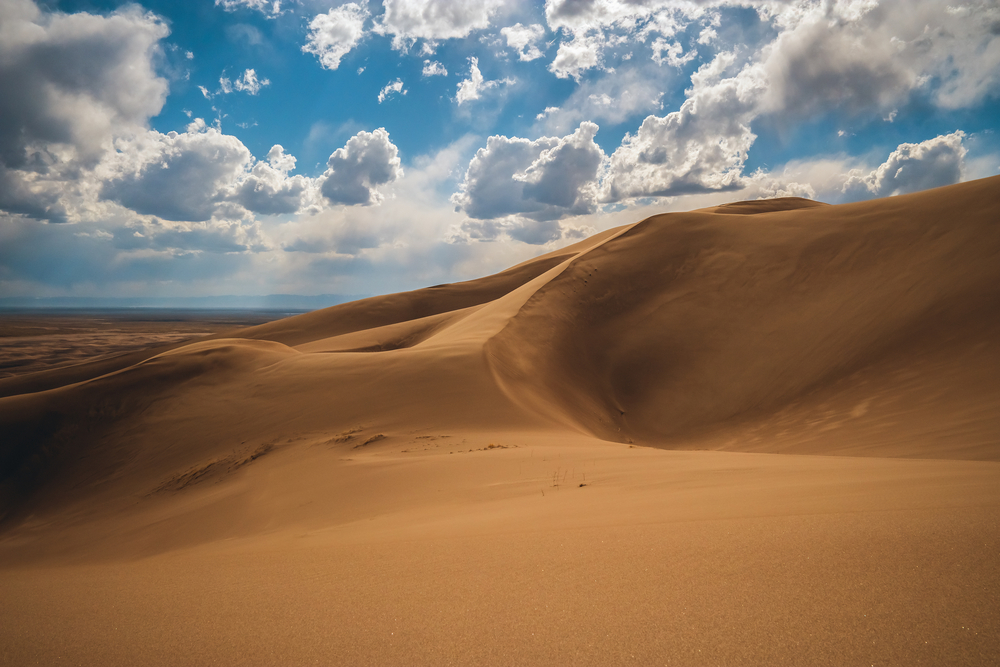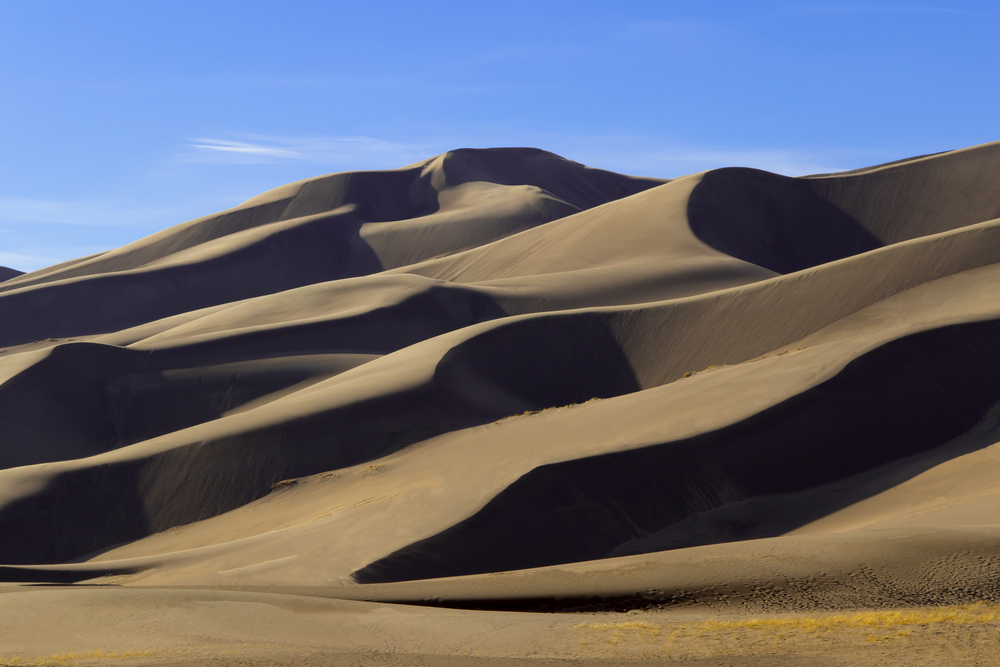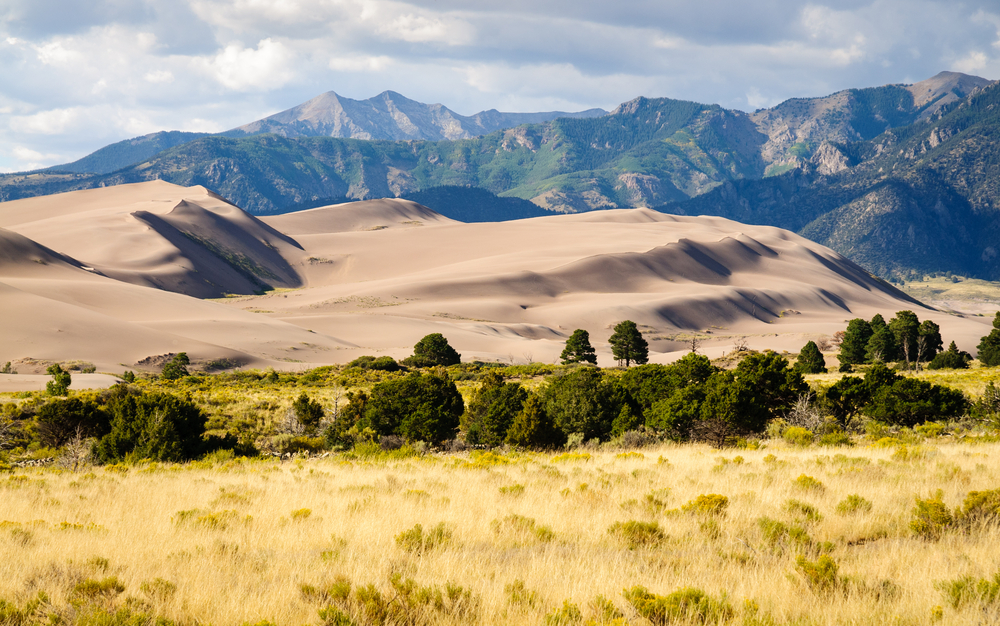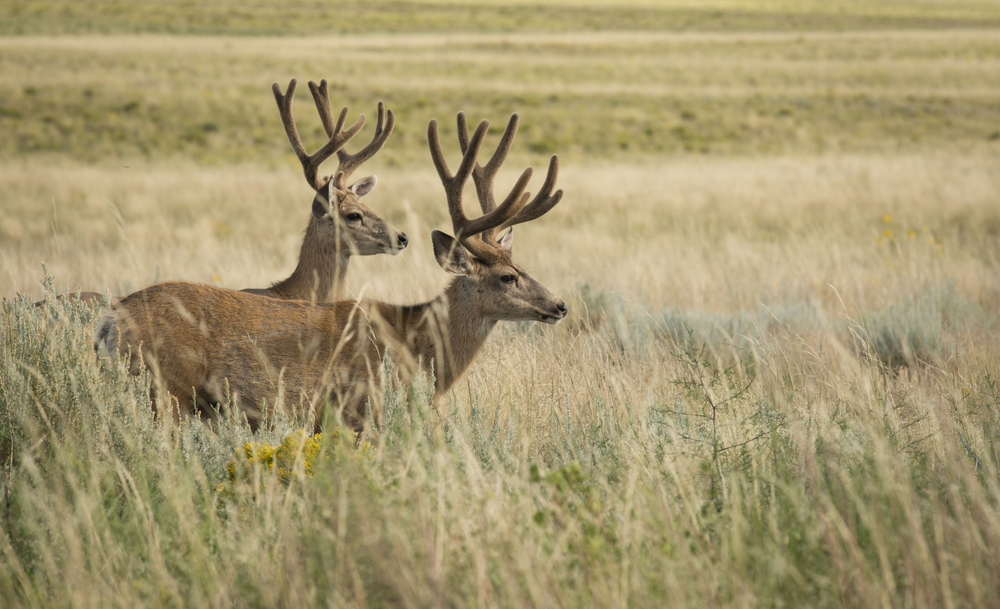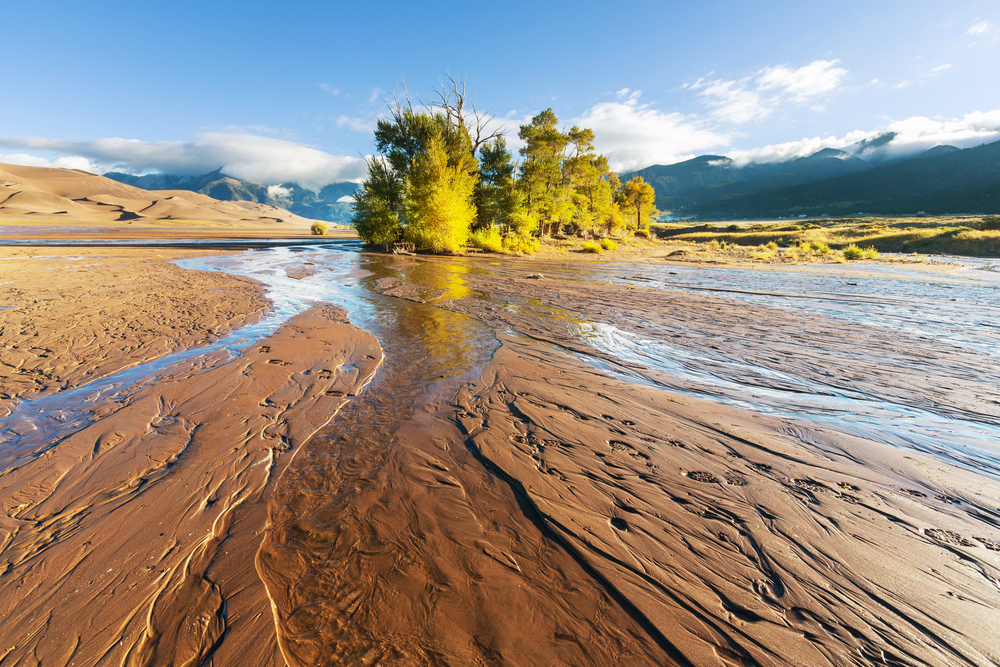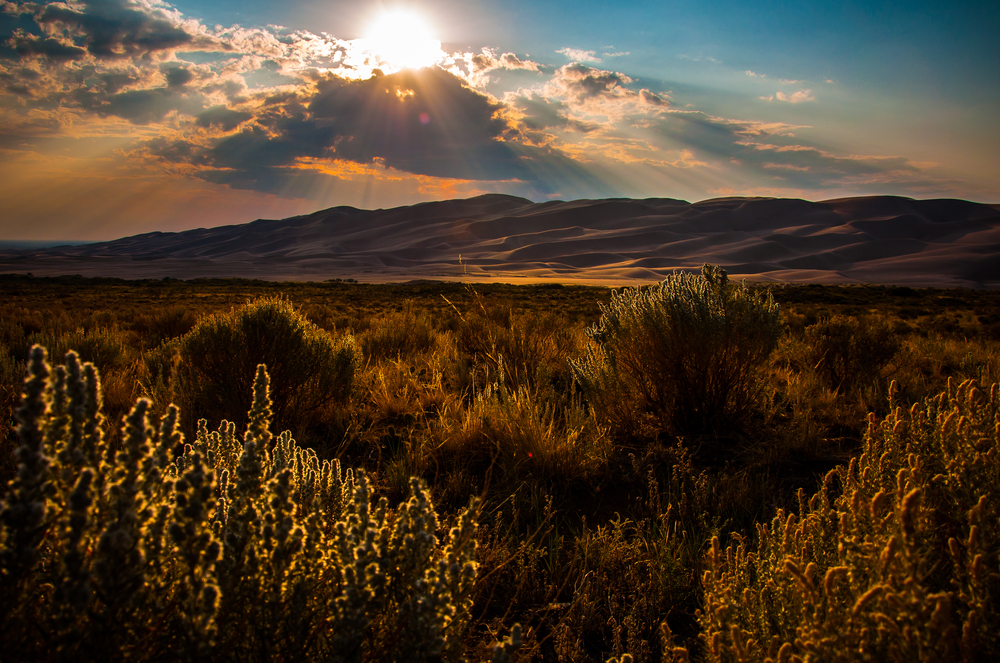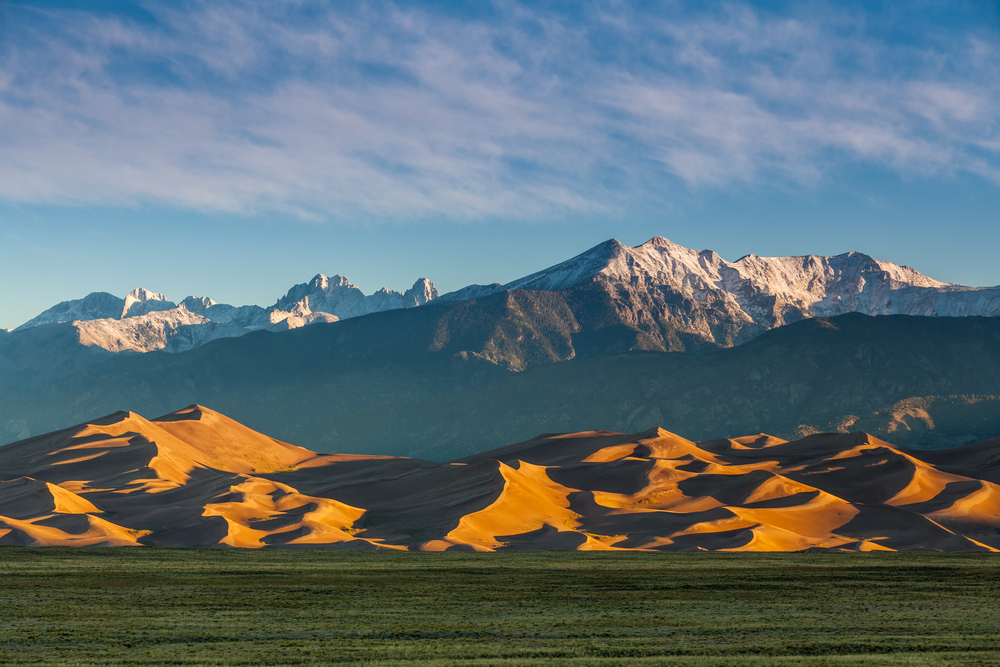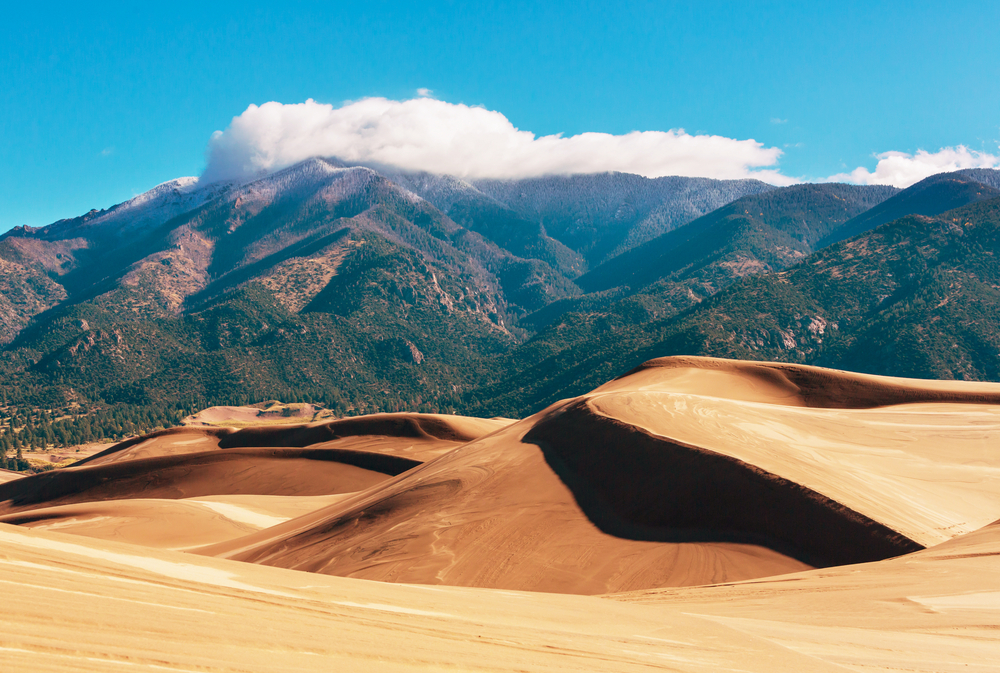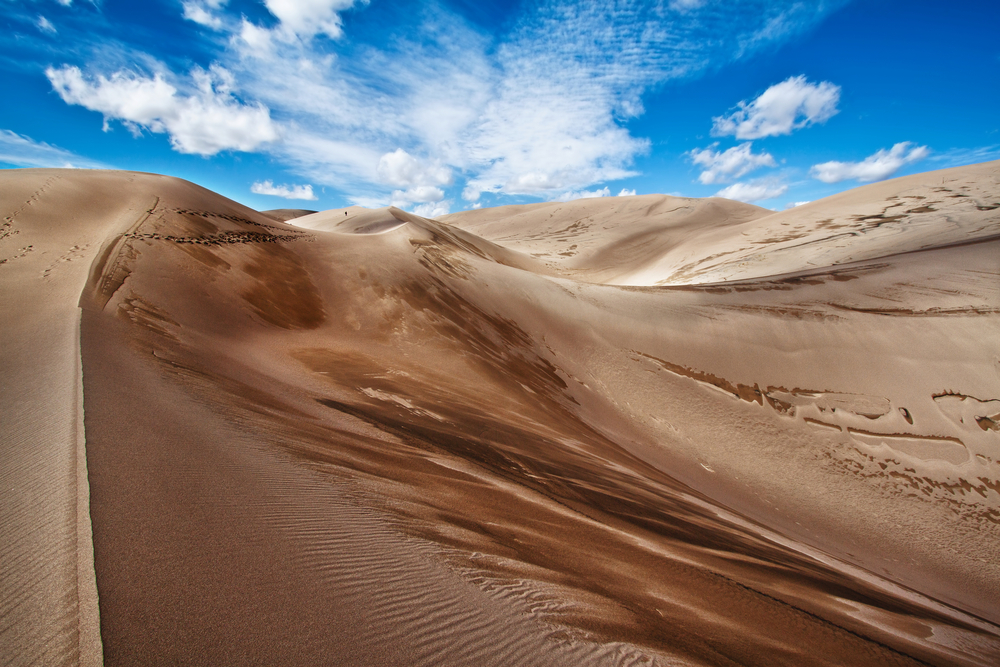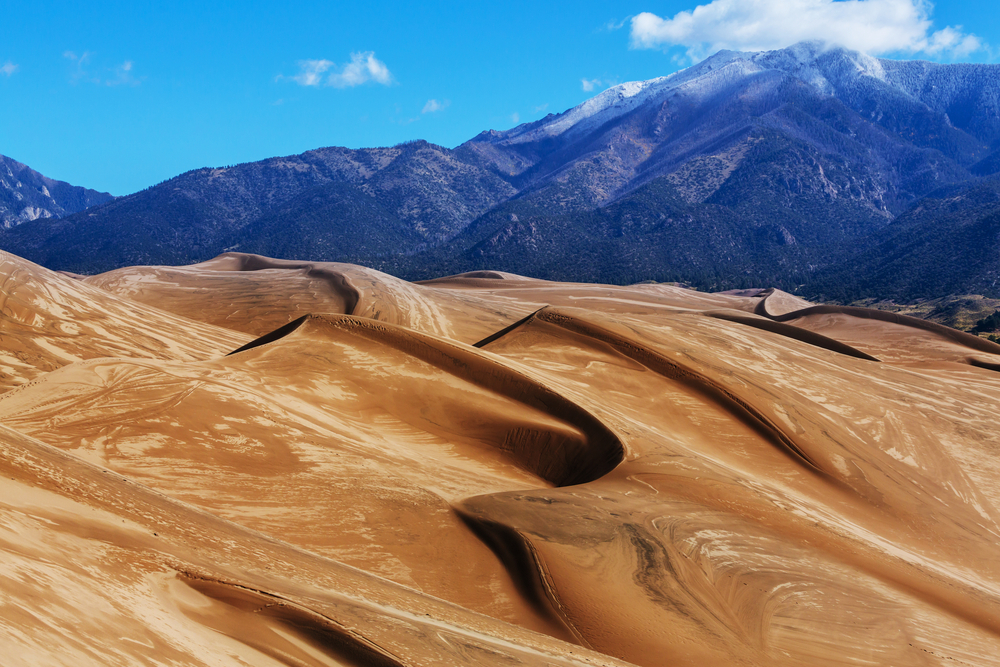Great Sand Dunes National Park and Preserve, located in southern Colorado, is renowned for its massive dunes, which are among the tallest in North America. The park features a diverse landscape that includes dunes, forests, wetlands, and alpine lakes, providing a unique ecosystem for a variety of wildlife. Here are some key features and activities that make Great Sand Dunes famous:
- Sand Dunes: The park’s most striking feature is its vast dune field, which covers about 30 square miles. The tallest dune, Star Dune, stands approximately 750 feet (229 meters) from base to crest, but the heights of the dunes are always changing due to the shifting sands.
- Diverse Ecosystems: Beyond the dunes, the park encompasses tundra, forests, wetlands, and grasslands, offering habitats for diverse flora and fauna. This variety of ecosystems makes it a fantastic place for nature observation and photography.
- Recreational Activities: Visitors can enjoy a wide range of activities, including sandboarding and sand sledding on the dunes, hiking, camping, and stargazing. The park’s remote location and minimal light pollution make it an ideal spot for viewing the night sky.
- Cultural History: The area has a rich cultural history, with evidence of human habitation dating back over 11,000 years. It has been used by Native American tribes, early explorers, and settlers, each leaving their mark on the landscape.
- Medano Creek: This seasonal stream at the base of the dunes is a popular spot in late spring and early summer. Visitors enjoy wading, tubing, and experiencing the unique “surge flow” phenomenon, where waves form in the creek due to sand and water interactions.
Great Sand Dunes National Park and Preserve provides a distinctive and awe-inspiring landscape that attracts visitors from around the world, offering them the chance to explore its natural beauty, engage in outdoor adventures, and learn about the area’s ecological and cultural significance.








































































